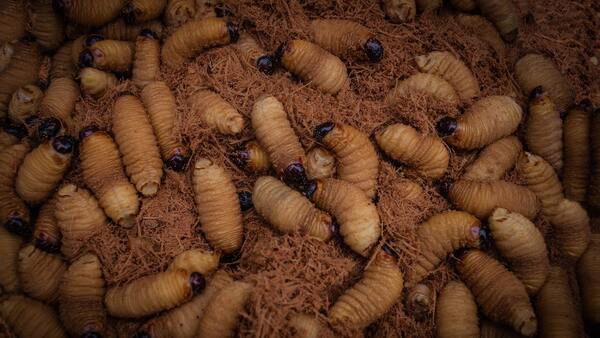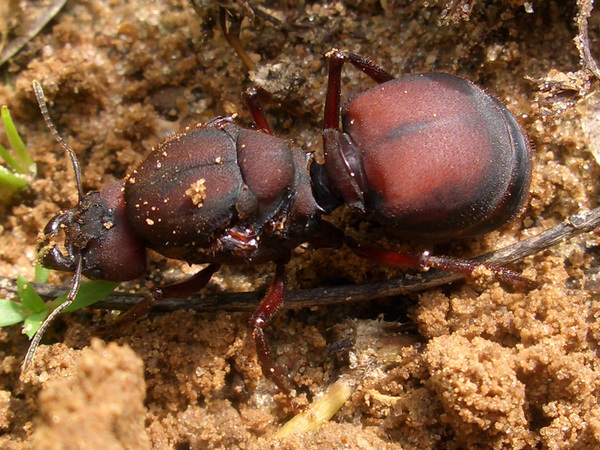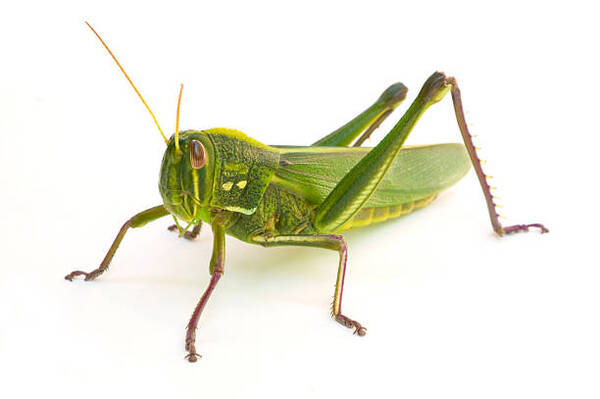The Amazon Rainforest, often referred to as the "lungs of the Earth," is not only a crucial ecological treasure but also a repository of rich cultural practices, particularly in food consumption. Among its numerous offerings, edible insects stand out as an important dietary component for many indigenous communities. With global concerns over food security, malnutrition, and environmental sustainability, the role of edible insects is more relevant than ever.
Across the globe, it is estimated that around 1,900 to 2,000 species of edible insects are consumed by approximately 3,000 ethnic groups in more than 102 countries. This figure represents a mere 0.2% of the over one million insect species described as of 2010. The increasing interest in entomophagy (the practice of eating insects) is driven by the need for alternative protein sources, particularly as the global population continues to rise, creating a strain on traditional food systems.
Edible insects are rich in essential nutrients, making them an excellent food source. Key nutritional benefits include:
High Protein Content: Many edible insects provide protein levels that rival those of conventional meats. For example, the larvae of the palm weevil (Rhynchophorus palmarum) contain around 76% protein, while beef contains approximately 50-57%.
Rich in Micronutrients: Insects are also sources of essential vitamins and minerals, such as iron, zinc, and B vitamins. These nutrients are crucial for maintaining overall health and combating malnutrition.
Healthy Fats: Insects contain beneficial fatty acids, including unsaturated fats that can help reduce the risk of heart disease. The fat content in palm weevil larvae, for instance, ranges from 21% to 54%, providing a healthy energy source.
Digestibility: Insect protein is highly digestible, which means that the body can absorb and utilize the nutrients more efficiently compared to some plant-based proteins.
The ecological footprint of raising insects for food is significantly lower than that of traditional livestock. Consider the following:
Resource Efficiency: Insects require substantially less land, water, and feed to produce protein. For instance, to produce 1 kg of beef, about 25 kg of feed is necessary, whereas only 2 kg of feed is needed to produce 1 kg of insects.
Lower Greenhouse Gas Emissions: Insects produce fewer greenhouse gases compared to cattle and other livestock, making them a more sustainable protein source in the face of climate change.
Waste Reduction: Many insects can be fed organic waste products, converting them into high-quality protein and thus contributing to a circular economy.
The Amazon Rainforest is home to about 135 species of edible insects, which represents roughly 0.23% of the total estimated insect species in the region, approximately 60,000. Among these, the most commonly consumed species include:
Palm Weevil Larvae (Rhynchophorus palmarum): Often referred to as suri or chontacuro, these larvae are a culinary staple in many Amazonian communities. They can be eaten fresh, roasted, or fried and are often sold in urban markets.

Ants and Termites: Various species, such as Atta cephalotes and Atta sexdens, are also popular. Indigenous groups in the Brazilian and Colombian Amazon, such as the Andoque, frequently consume these insects.

Grasshoppers and Beetles: Other species from the orders Orthoptera and Coleoptera are harvested and consumed in various ways.

Insect consumption is deeply embedded in the cultural practices of many indigenous communities in the Amazon. For example, certain groups celebrate the harvest of specific insects during festivals, integrating them into rituals and traditional dishes. This cultural connection not only reinforces the importance of insects in their diets but also fosters a sense of community and identity.
The level of insect consumption varies among different communities within the Amazon. Research shows that while there are many edible insect species, only about 30 are frequently consumed. The palm weevil larvae are particularly popular, with some reports indicating that certain communities, such as the Yanomami, consume an average of 6 kg of suri per person annually. This means that individuals may eat up to 50 larvae each month, reflecting the importance of this food source.
In urban areas of the Amazon, particularly in cities like Iquitos in Peru, edible insects are sold in markets. The sale of palm weevil larvae can reach an average of 3,500 units daily, especially on weekends, highlighting their popularity and economic importance.
Edible insects are prepared in various ways across the Amazon. In traditional settings, they may be consumed fresh, alive, roasted, or fried. Urban chefs have begun to incorporate these ingredients into modern dishes, creating innovative recipes that blend indigenous and contemporary culinary techniques.
For instance, popular dishes include:
Juane de Chonta: A traditional dish that combines palm larvae with palm shoots, showcasing the flavors of the Amazon.
Skewered Palm Worms: Often served in restaurants as a gourmet appetizer, these dishes present insects in a way that appeals to both locals and tourists.
Numerous studies have highlighted the impressive nutritional profile of edible insects.
Protein Content: The protein content of edible insects can vary significantly, ranging from 30% in some wood larvae to as high as 80% in certain wasps. In the case of palm weevil larvae, the protein content of 76% exceeds that of most conventional meats.
Fat Content: The fat content in insects is also noteworthy. While the fat content in traditional meats ranges from 17% to 19%, palm weevil larvae can contain between 21% and 54% fat, often consisting of healthy unsaturated fatty acids.
Caloric Value: The caloric density of palm weevil larvae is around 560 kcal per 100 grams, which is higher than the 430 kcal per 100 grams found in beef.
The protein derived from insects is not only high in quantity but also of high biological value, meaning it contains all essential amino acids necessary for human health. This high biological value makes insects an excellent complement to other protein sources, especially plant-based foods like rice or cassava, which may lack certain essential amino acids.
Despite the clear benefits of edible insects, several challenges remain:
Cultural Resistance: In some regions, there are cultural biases against consuming insects, often viewed as "dirty" or unpalatable. Education and awareness campaigns can help shift these perceptions, emphasizing the nutritional and environmental benefits.
Seasonality: Insect availability can be seasonal, affecting their consumption patterns. Climate change and environmental degradation can also impact insect populations and biodiversity.
Market Development: The potential market for edible insects is significant but largely untapped. Developing a robust supply chain and promoting insect farming could help meet this demand.
Regulatory Framework: Establishing safety standards and regulations for insect farming and processing is crucial to ensure the health of consumers and promote confidence in edible insects as a viable food source.
Countries like Thailand and Mexico have already begun to scale up insect farming. This method not only enhances food security but also provides economic opportunities for rural communities. Promoting insect farming could offer a sustainable solution to global food challenges.
Edible insects offer a promising solution to some of the most pressing challenges of our time, including food insecurity, malnutrition, and environmental sustainability. By embracing traditional practices and integrating them into modern culinary culture, there is an opportunity to enhance the recognition and consumption of these nutritious creatures. With appropriate education, cultural acceptance, and economic support, the journey toward wider acceptance of edible insects can pave the way for innovative solutions to global food challenges, fostering a sustainable and nutritious future for all.
animal tags: Ants
We created this article in conjunction with AI technology, then made sure it was fact-checked and edited by a Animals Top editor.